A few weeks ago my brother Brian at Flannel Farms and I had the chance to visit The Modern Yeoman’s homestead in Knoxville for a backyard pig butchering day. We were joined by a few other YouTubers, including The Kraemer Life and Growing Little Country homestead.
Our butchering instructor was Billy from Perma Pastures, along with his son William.
Today, at long last, I present a photo-essay, showing the process of pig butchering from start to finish.
First, William (left), Billy (center), and Sean (right), plan the slaughter of Sean’s two delicious pigs.
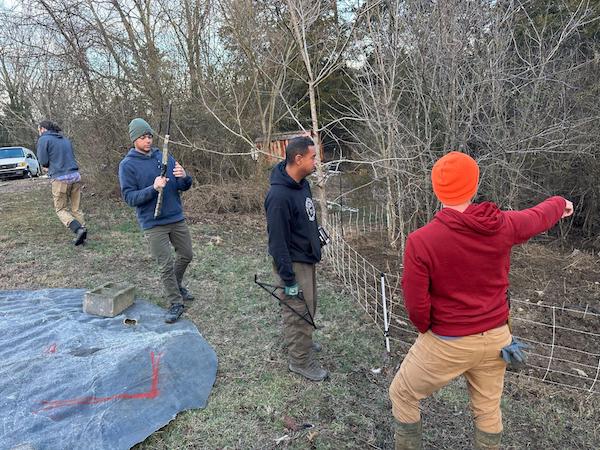
Here are the delicious pigs. They are nothing that anyone in his right mind would like to cuddle, vegan commenters on YouTube notwithstanding. 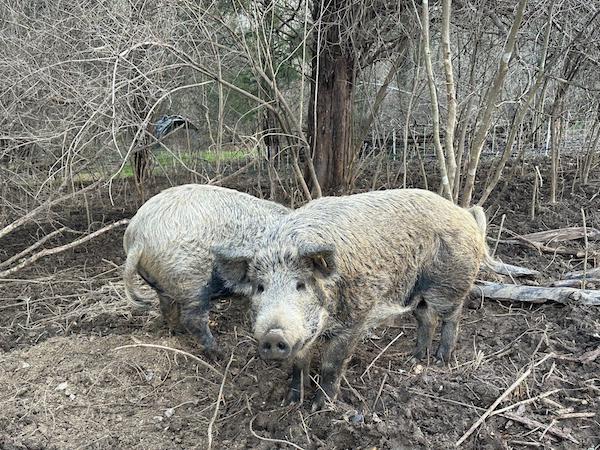
Here, Billy loads a single round into a .410 shotgun.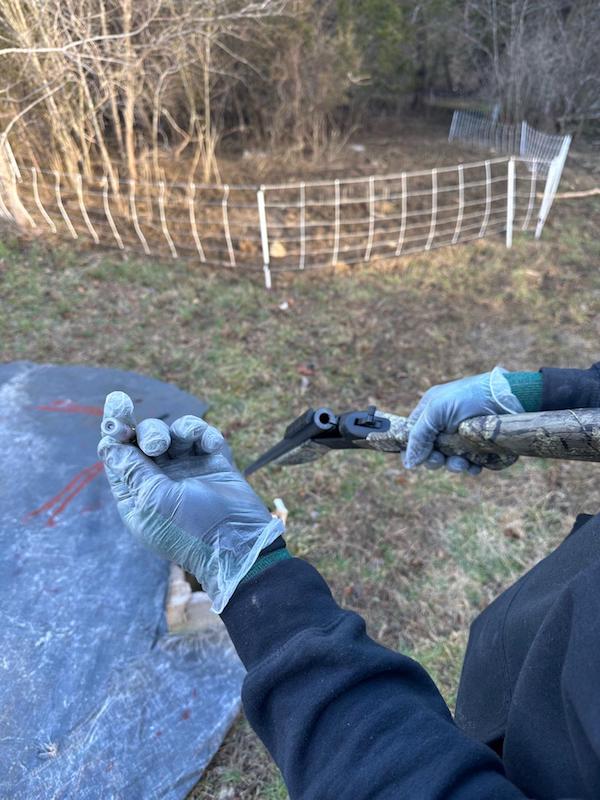
Pow!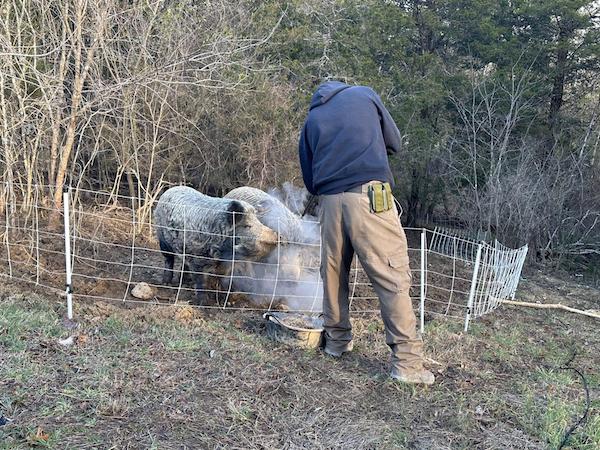
Billy shared that the proper way to take down a pig with a gun is to shoot him at the “X” intersection of the eyes and ears. From the left ear to the right eye makes one bar of the X, and from the right ear down to the left eye is the other bar.
Once the pig is down, the throat is rapidly cut from beneath the ear and through the artery. 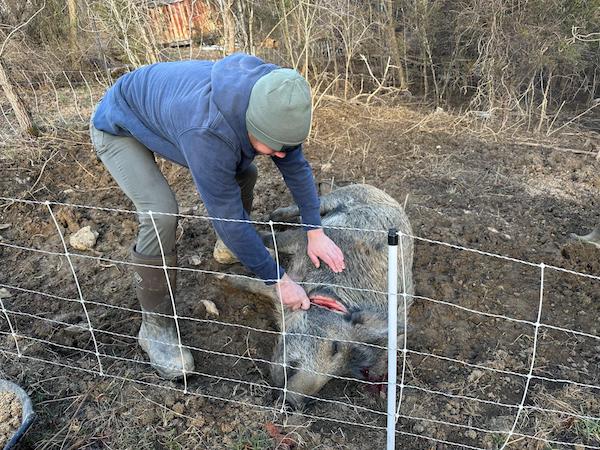
Here, Sang and Sean pump the blood from the pigs.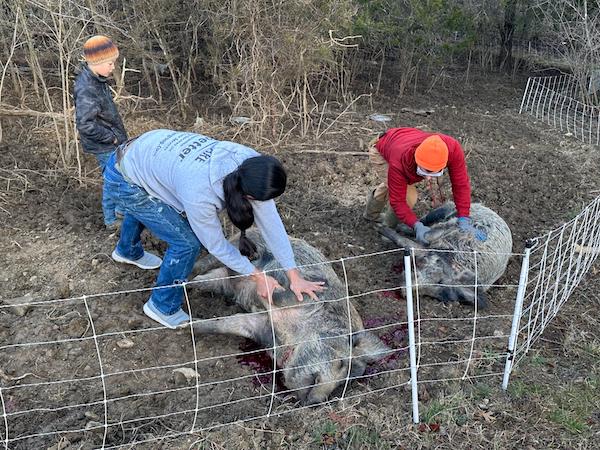
Until Billy has an easier method, which involves gently stomping on the pig’s corpse. 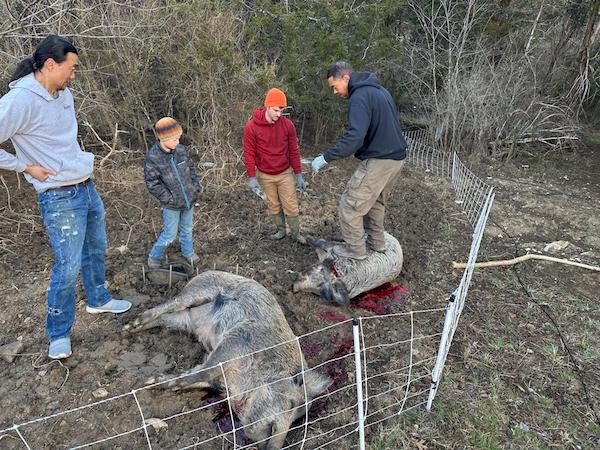
Now the bleeding has stopped and the pigs are taken to a tarped piece of ground for the next step. 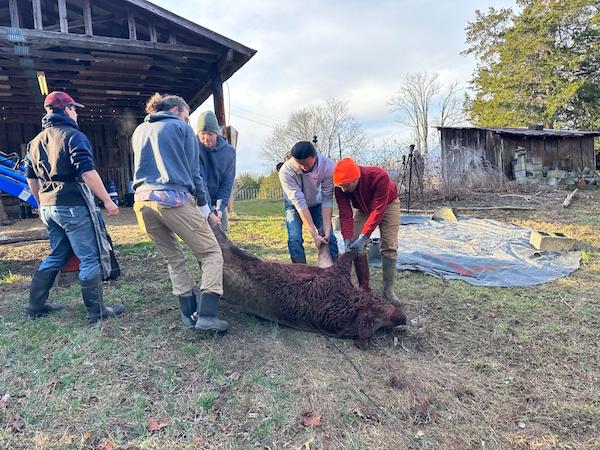
Here, the heads are completely removed. 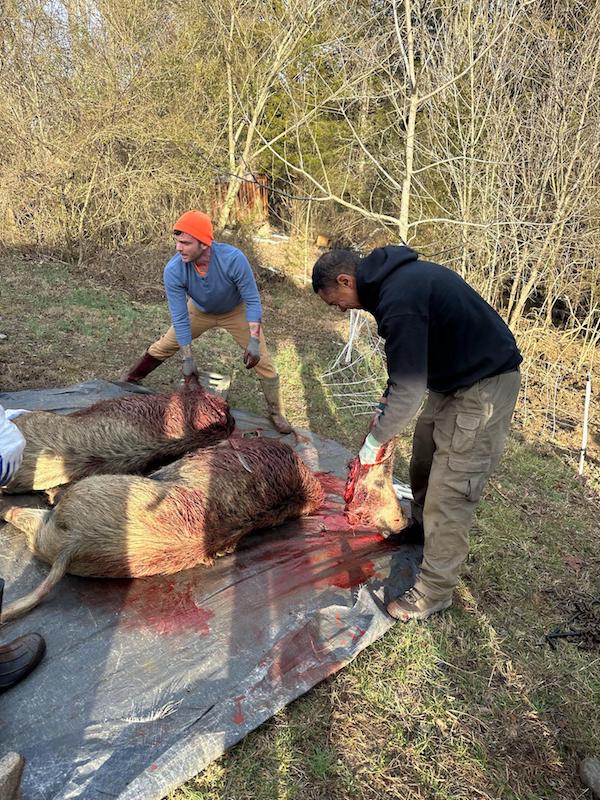
Billy counts his fingers to make sure he wasn’t too energetic with his knifework.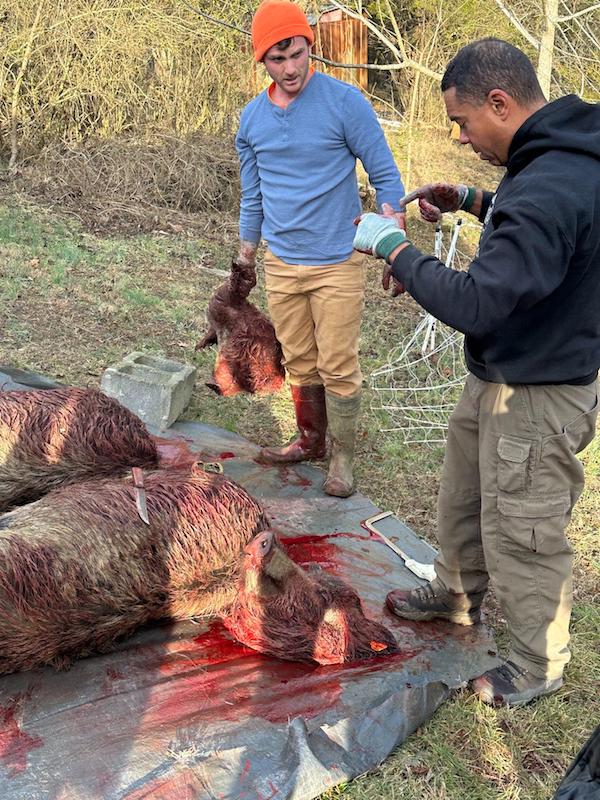
Now the breastbones of the pigs are sawn through while they are still on the ground. 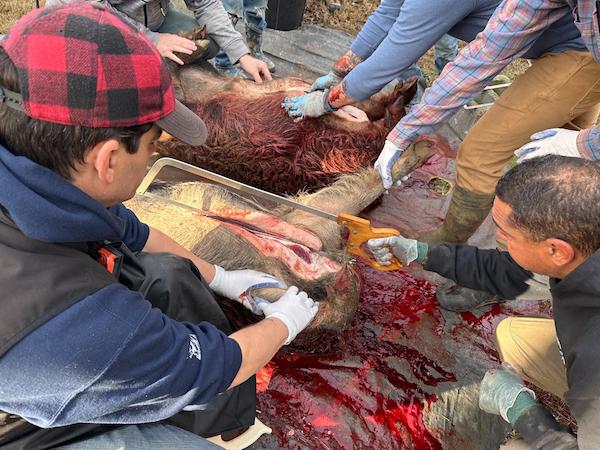
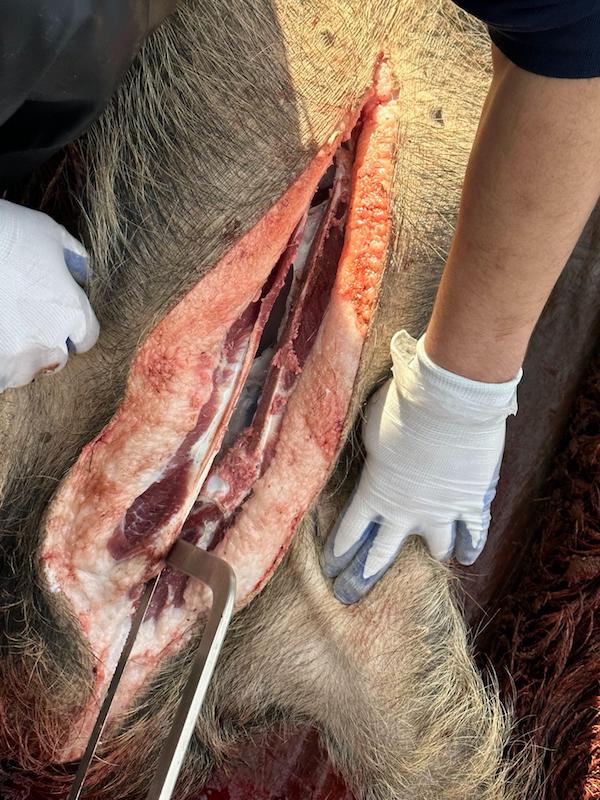
Once opening the chest cavity is completed, Sean cuts into the back feet to open up a place to hook the pigs for hanging – a pocket between the ankle area and the back tendons.
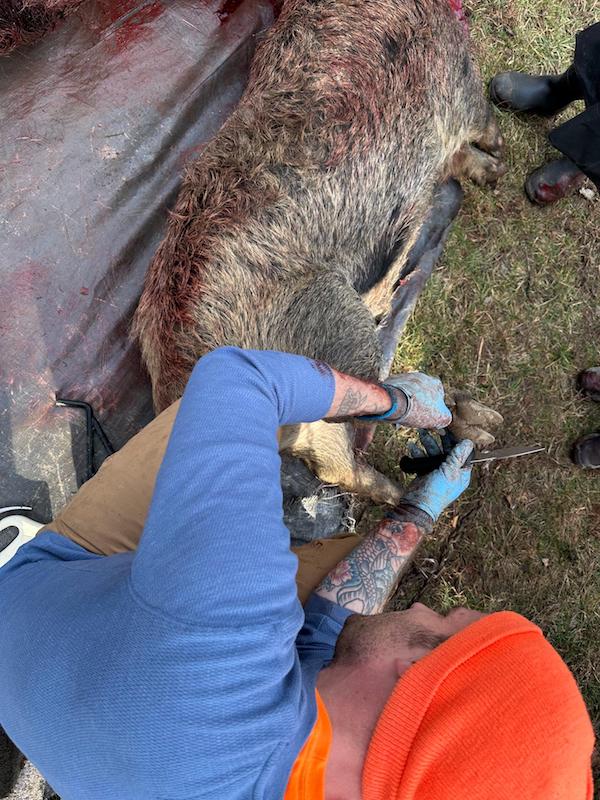
The pig is hooked up, then hoisted by the tractor for the next stage. 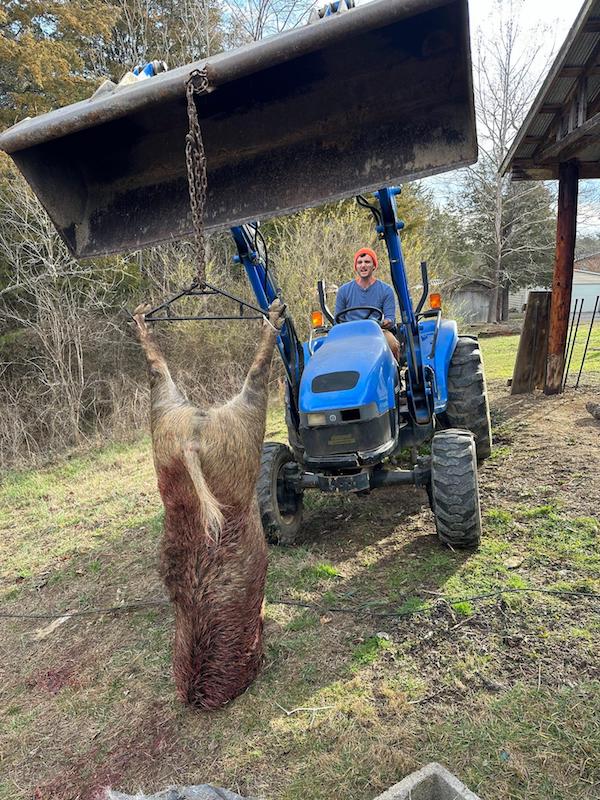
Safety first! Don’t count on just the bucket to hold up hundreds of pounds of pig. Nate and Sean use a log as a backup to the tractor hydraulics.
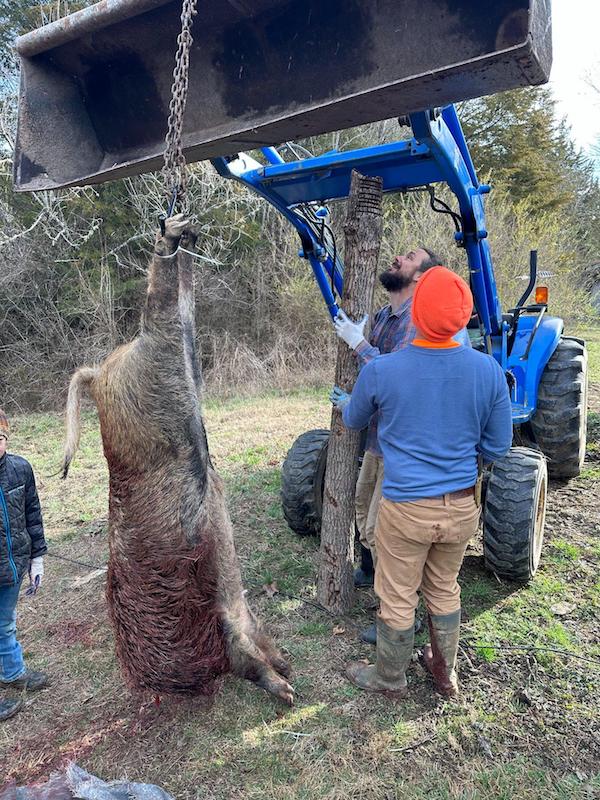
Now it’s time to remove the guts.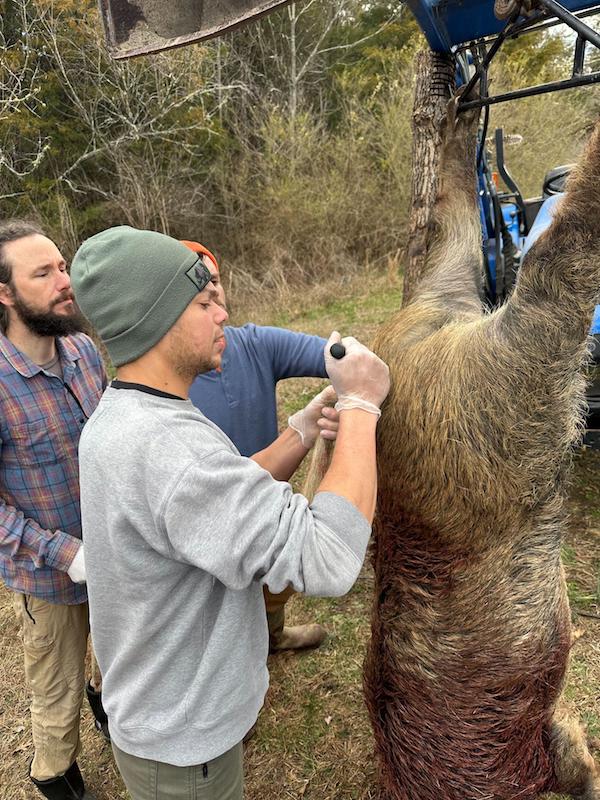
Billy cuts around the anus, being careful not to puncture the intestines. Once it’s freed from the flesh, he ties it off with a zip tie to keep manure from contaminating the meat. 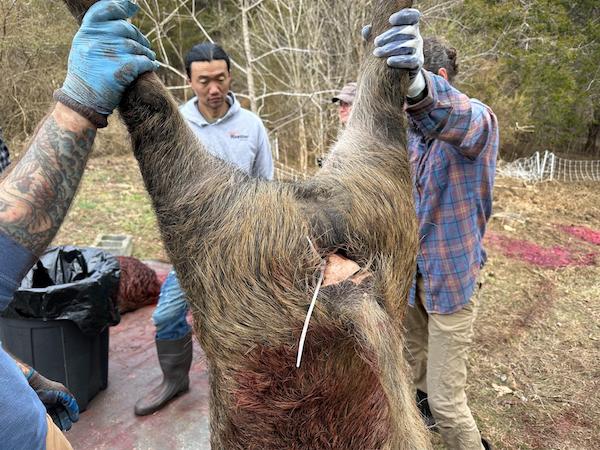
Now the visceral cavity is carefully opened and the guts revealed.
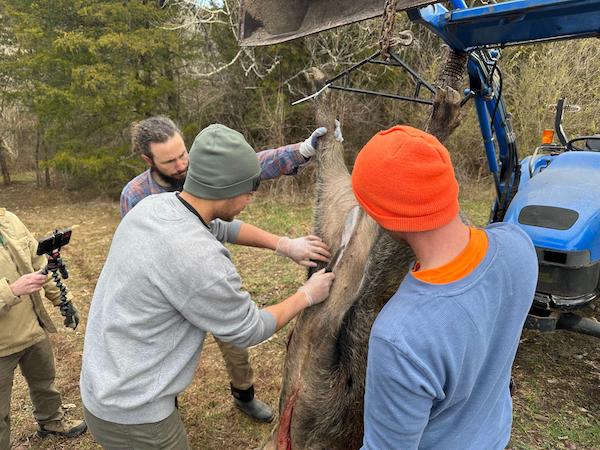
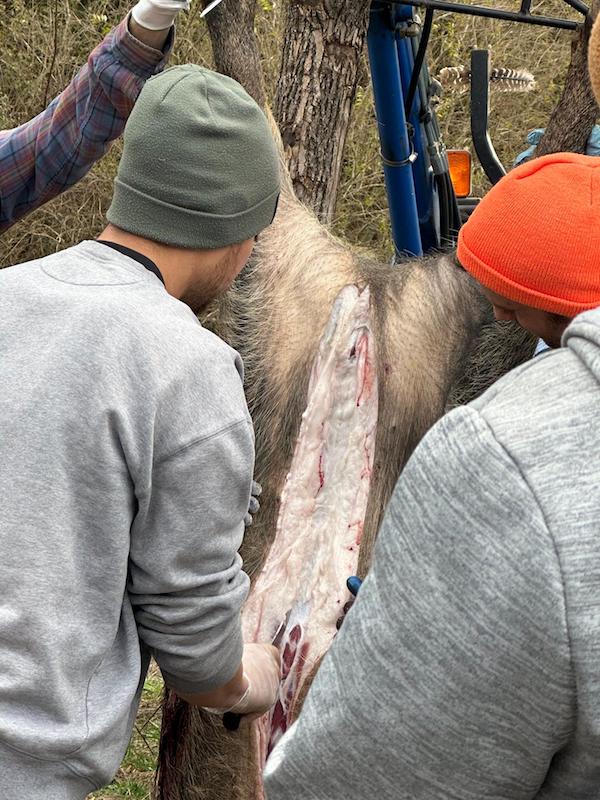
Now a trashcan is placed beneath the pig to catch the viscera. 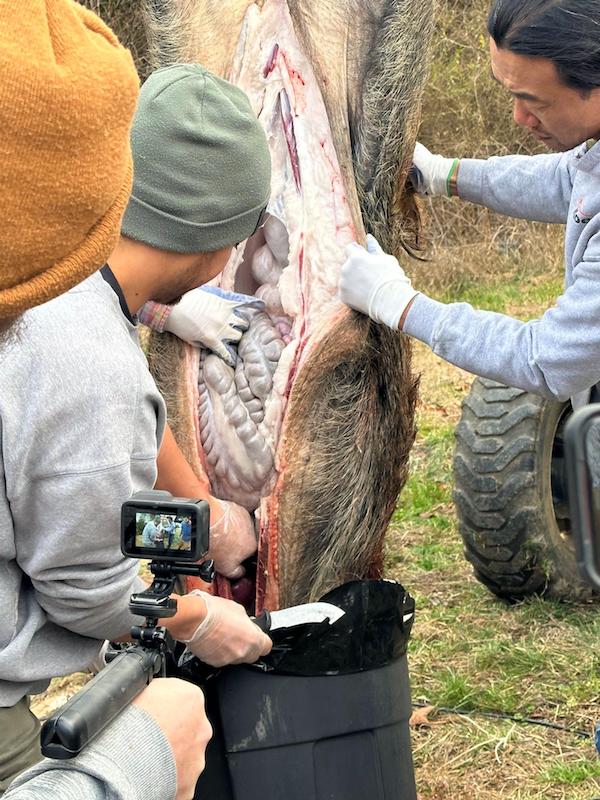
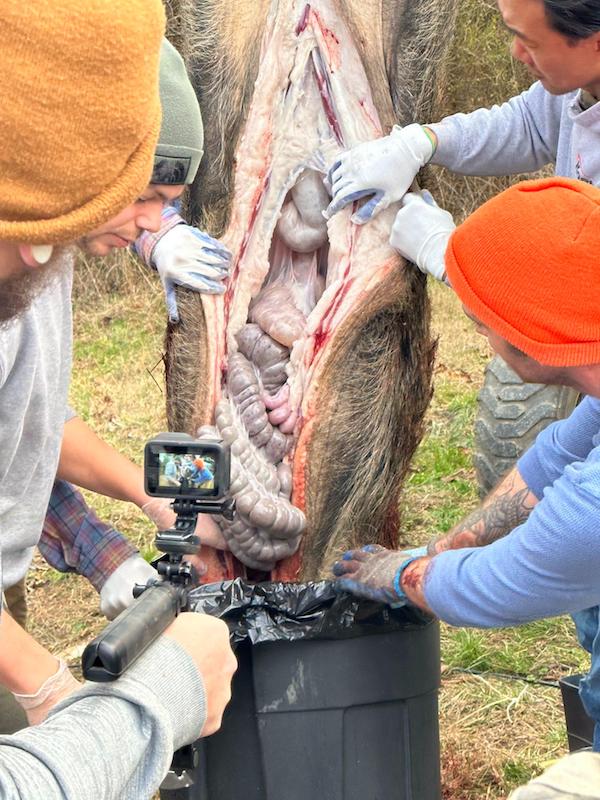
At this point, you can save your favorite organs if you wish. Sean wasn’t big on organ meat, but did save at least one of the livers. 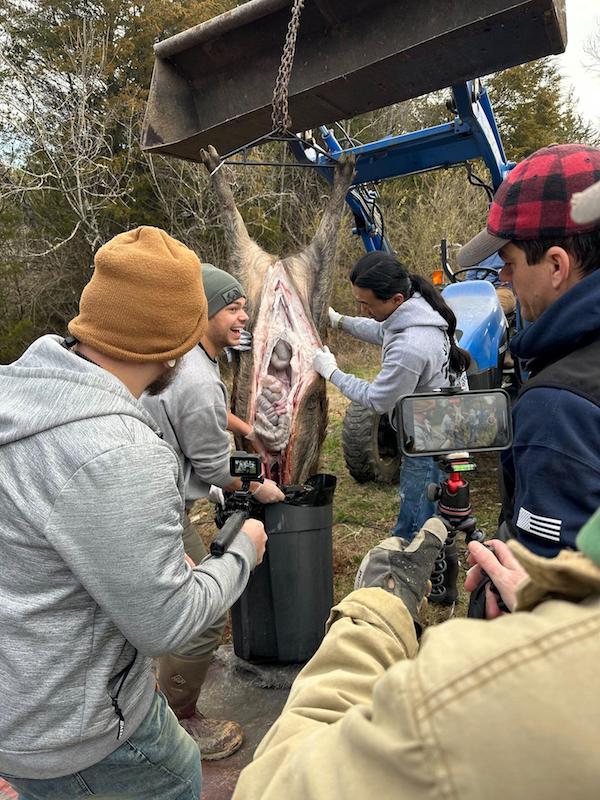
Once the pig is gutted, it’s time to skin.
Billy demonstrates how to cut through the skin in strips with a hooked razor knife, then peel the skin off the fat beneath.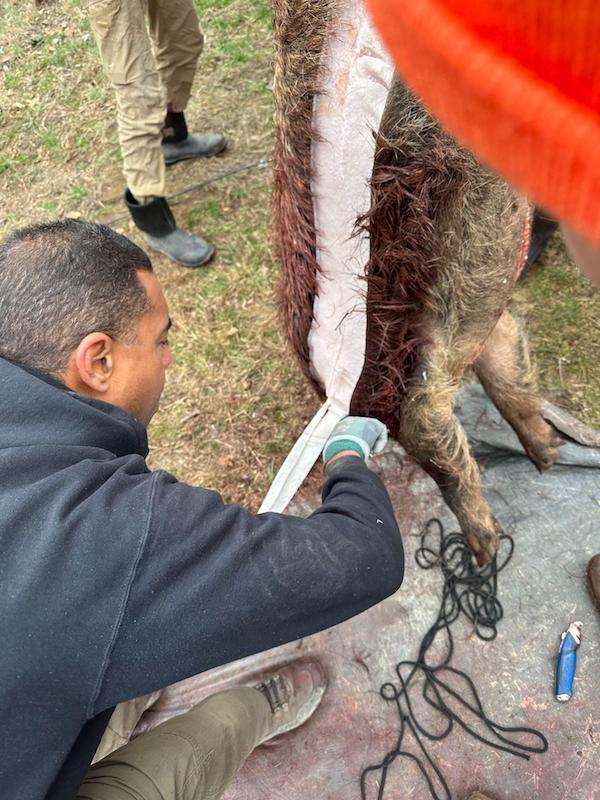
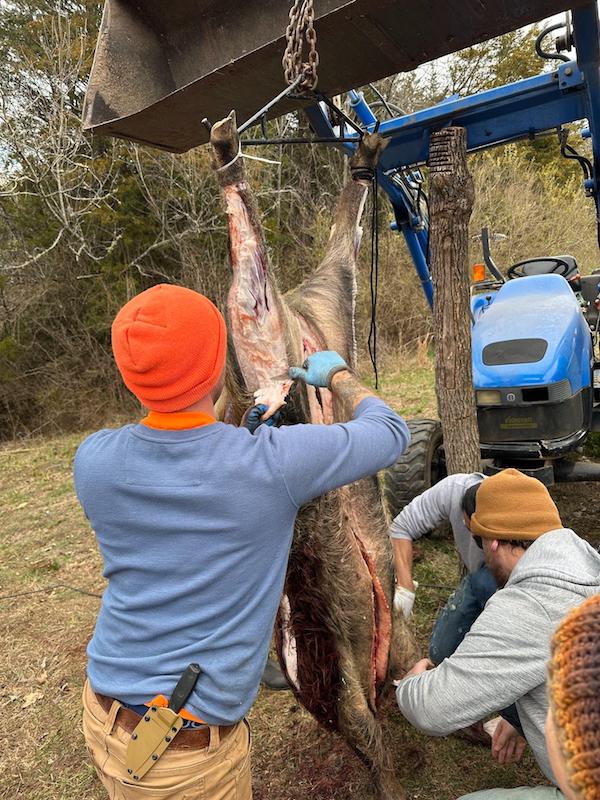
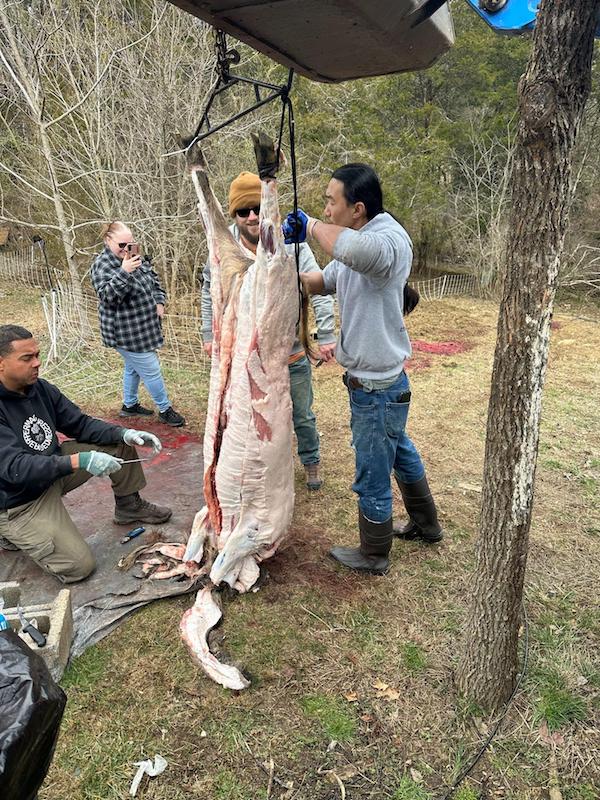
Once the skinning is complete, it’s time to saw the pig in two. Billy does this with a sharp butchering saw, dividing the carcass right through the spine.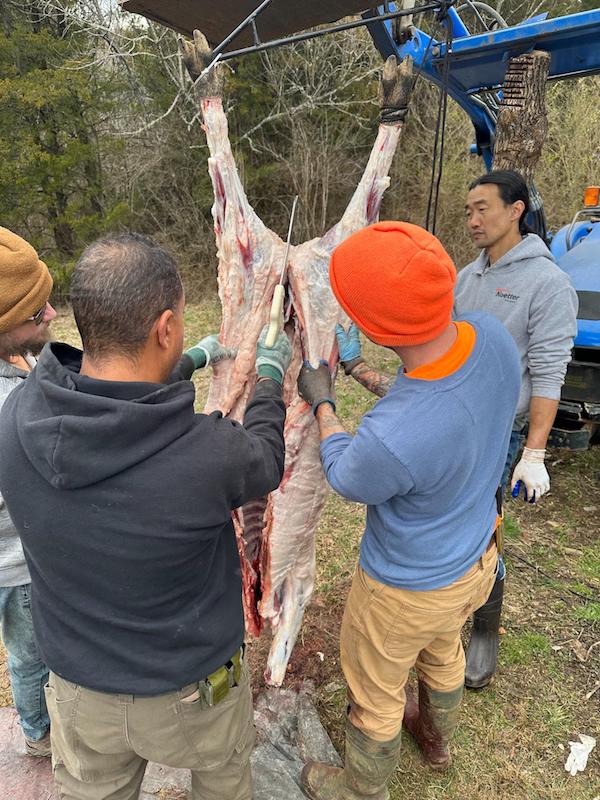
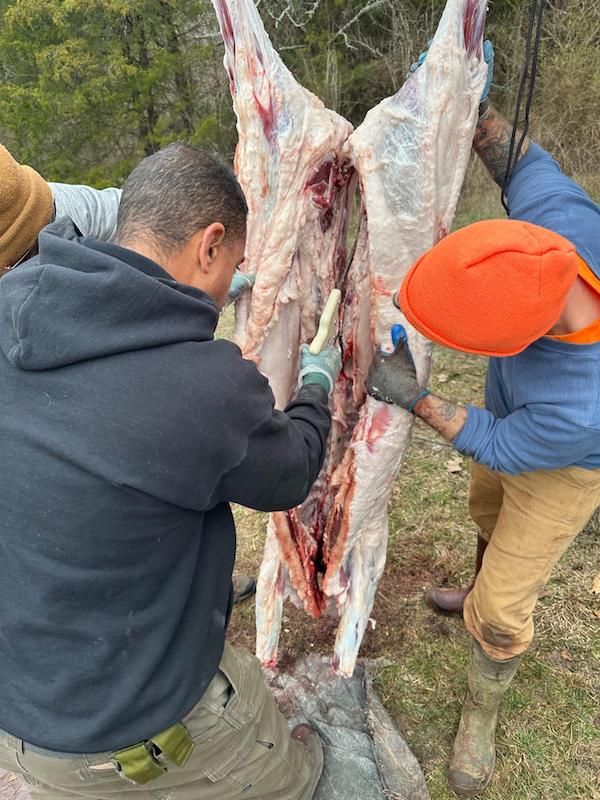
This can be done with a Sawsall, but the old fashioned method can be done off-grid, and is also rather less messy.
Once divided, the two halves of the pig are washed. 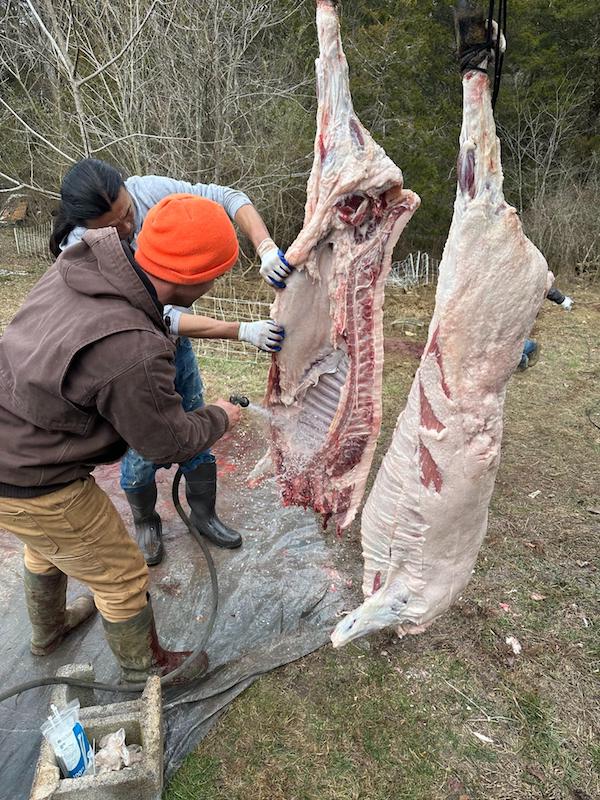
…and taken down…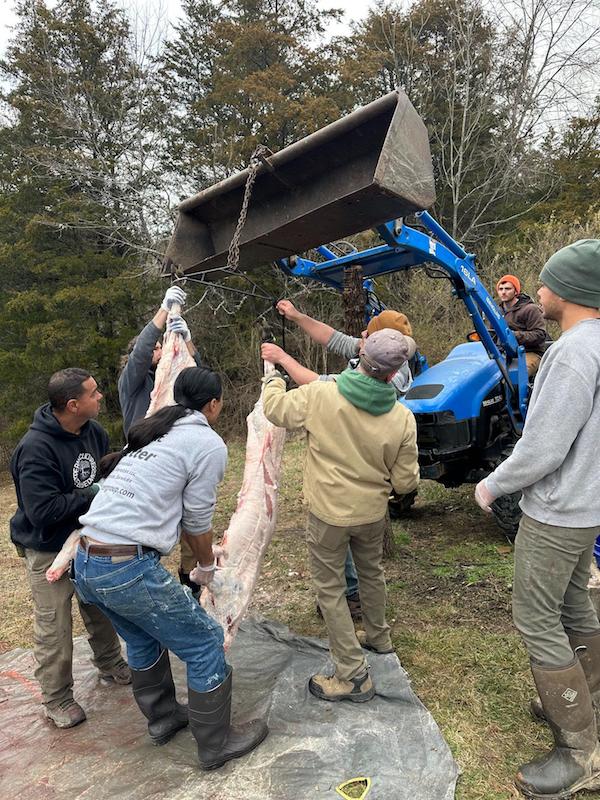
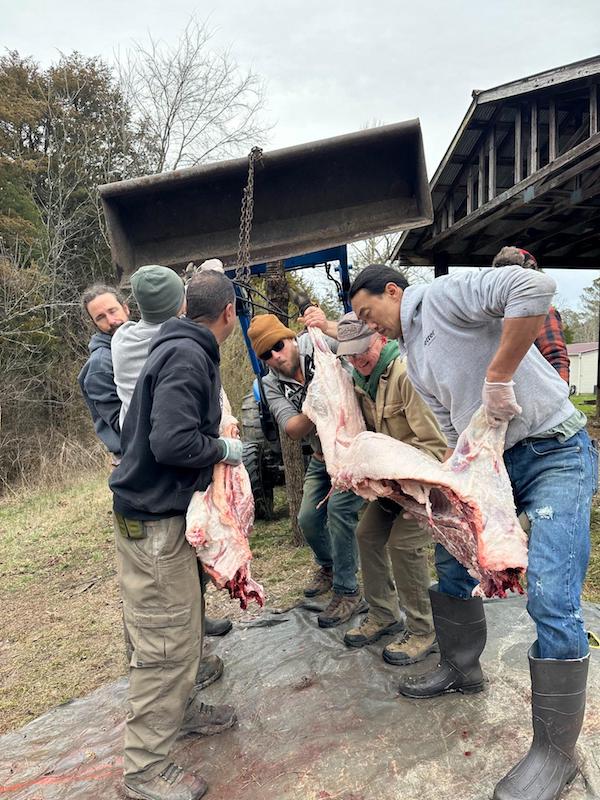 …and transported to the main butchering area.
…and transported to the main butchering area.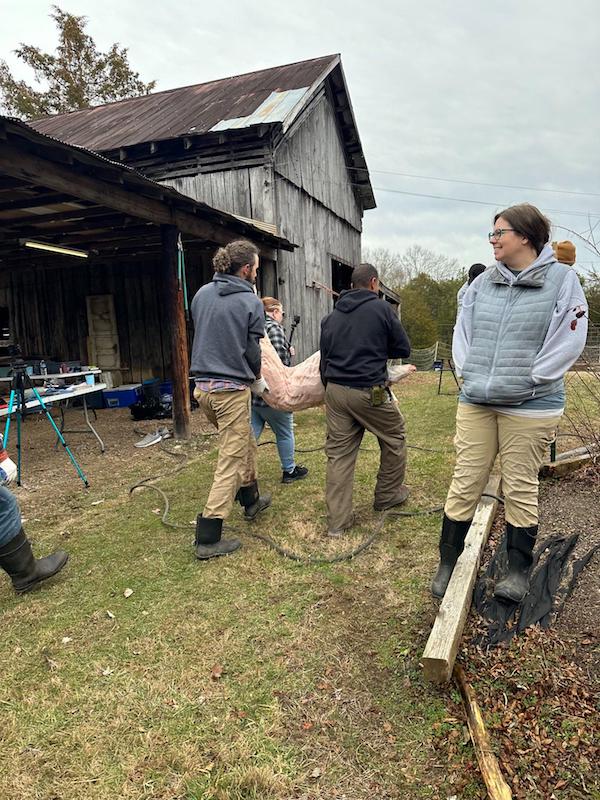
Here the two halves are laid out on a pair of clean plastic folding tables. 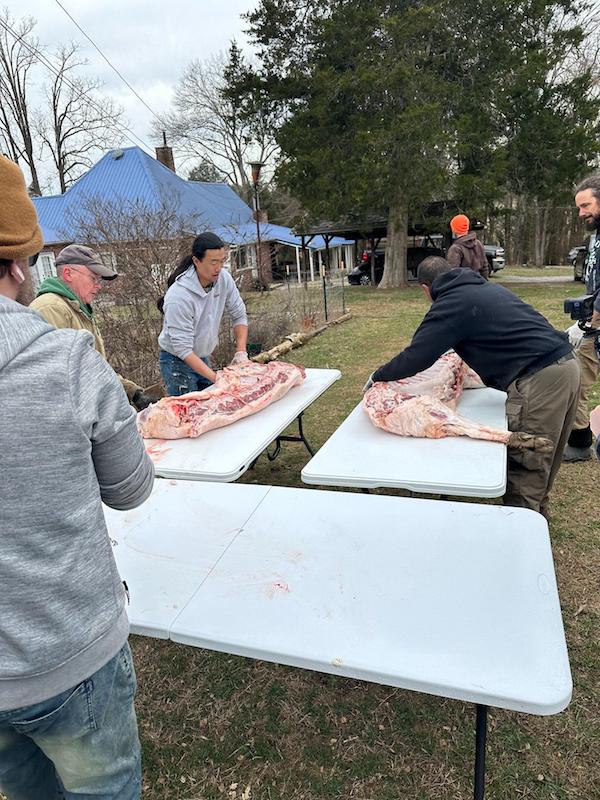
Billy and the crew carve the pork into pieces. Ribs, hams, loin, etc.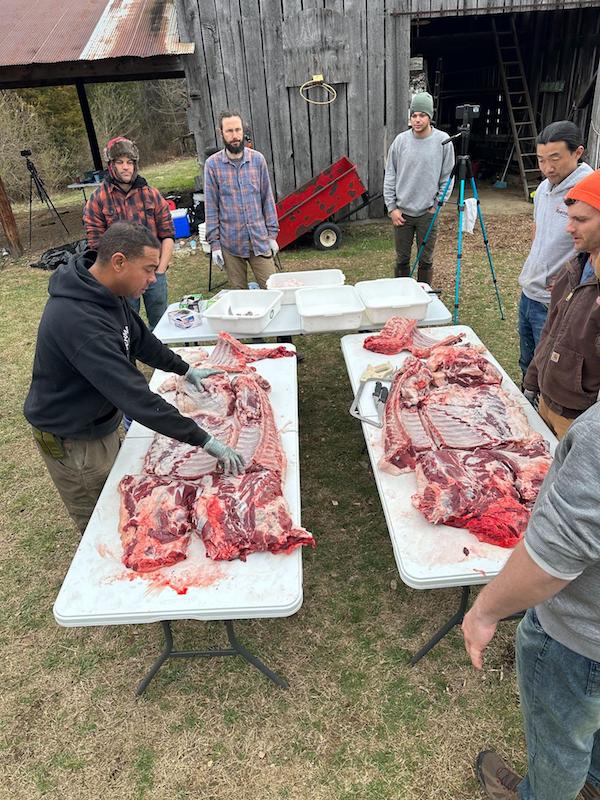
Once they are cut up, Billy quizzed everyone on the parts and where they belonged in the animal.
The lesser quality pork is made into ground pork. Here Brian is grinding it down.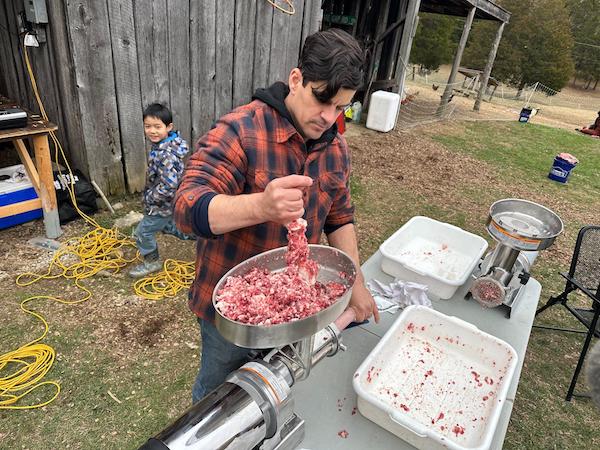
Two grinders were on the table. One ground it the first time and ejected the pork into a tray. That was then fed into the second grinder which had a feed tube on the end, allowing the pork to be neatly bagged.
The fat was trimmed and set aside for rendering into lard. We were the beneficiary of quite a few pounds of nice, white fat, which Rachel later processed into almost three gallons of beautiful lard.
While Brian was running the grinder, Isaac, Katie and I ran a vacuum sealing station for the prime cuts of pork, bagging and labelling them all. I cut bags and packed them, Katie ran the vacuum sealer, and Issac was our labeller.
Here, Brian is standing in for me.
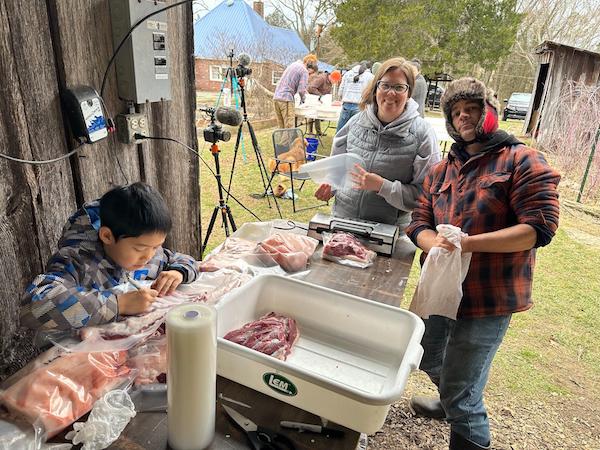
Finally, just a few short hours after the two pigs were dispatched, there is a beautiful freezer full of home-raised pork.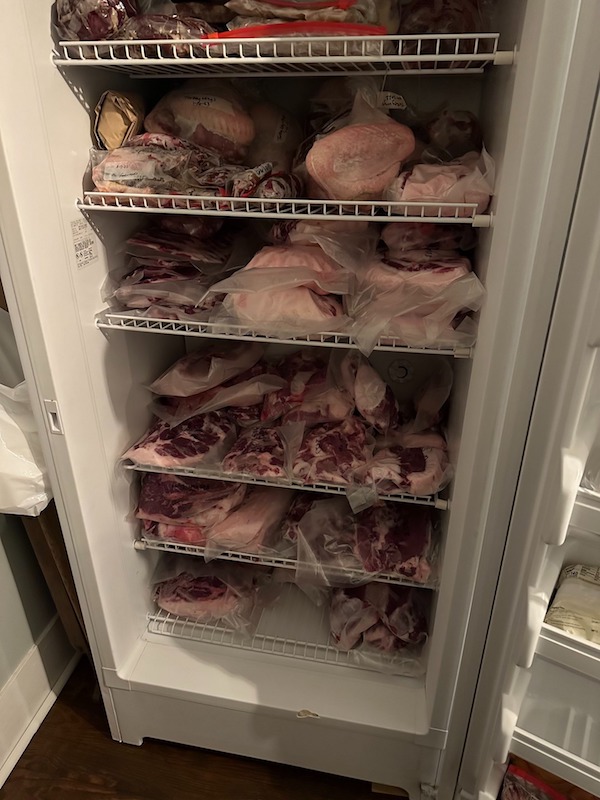 This fall we hope to do a similar butchering day on our own homestead with the two piglets we’re currently raising.
This fall we hope to do a similar butchering day on our own homestead with the two piglets we’re currently raising.
I much prefer the way these pigs were raised and fed to the horrors of factory pig farming. Home butchering may be a chore, but like any chore, it can be turned into a fun day when shared with the right company.
Thank you, Brian, for inviting me along, and Sean for hosting, and Billy and William for their pig-butchering expertise.


11 comments
Amazing photos, equally amazing work and workers, well done! I saw a bit of it live, and have to say, that’s probably the only way that I could learn and do. Thanks so much!
That’s awesome – thank you.
Thanks for this! We just did our first pig on March 4. We dipped and scraped it. But skinning seems easier. What did you do with the skin? Do you lose a lot of fat with the skin?
Some fat was lost, but we tried to separate it as much as possible, keeping the knife blade just below the follicles. The skin got composted, I think.
Perfect pictures! I love watching the YouTube community come together. So there is no hang time for pig? When we did the cow letting it sit before freezing made the meat better. Just wondering. We have a pig named sausage that we will be processing soon.
Thank you for sharing. You are a brave man.
No hang time. Cows are definitely tougher.
It’s great that you got to see and learn how to butcher pigs, it’s very valuable information.
What breed were those pigs?
I think they were a cross of something with Mangalitsa.
Good skills. As a young adult, I was around hunters who could take down a deer, load it in the truck and bring it home for processing. Once a couple of Georgia guys we called Jughead and his brother Jughead whose specialty was trolling for deer on the back roads were gifted a cow by a farmer. In their excited they went into the field and put a bullet to its head then couldn’t figure out how to load it up. Haha. It was too heavy. True story.
*excitement
Comments are closed.